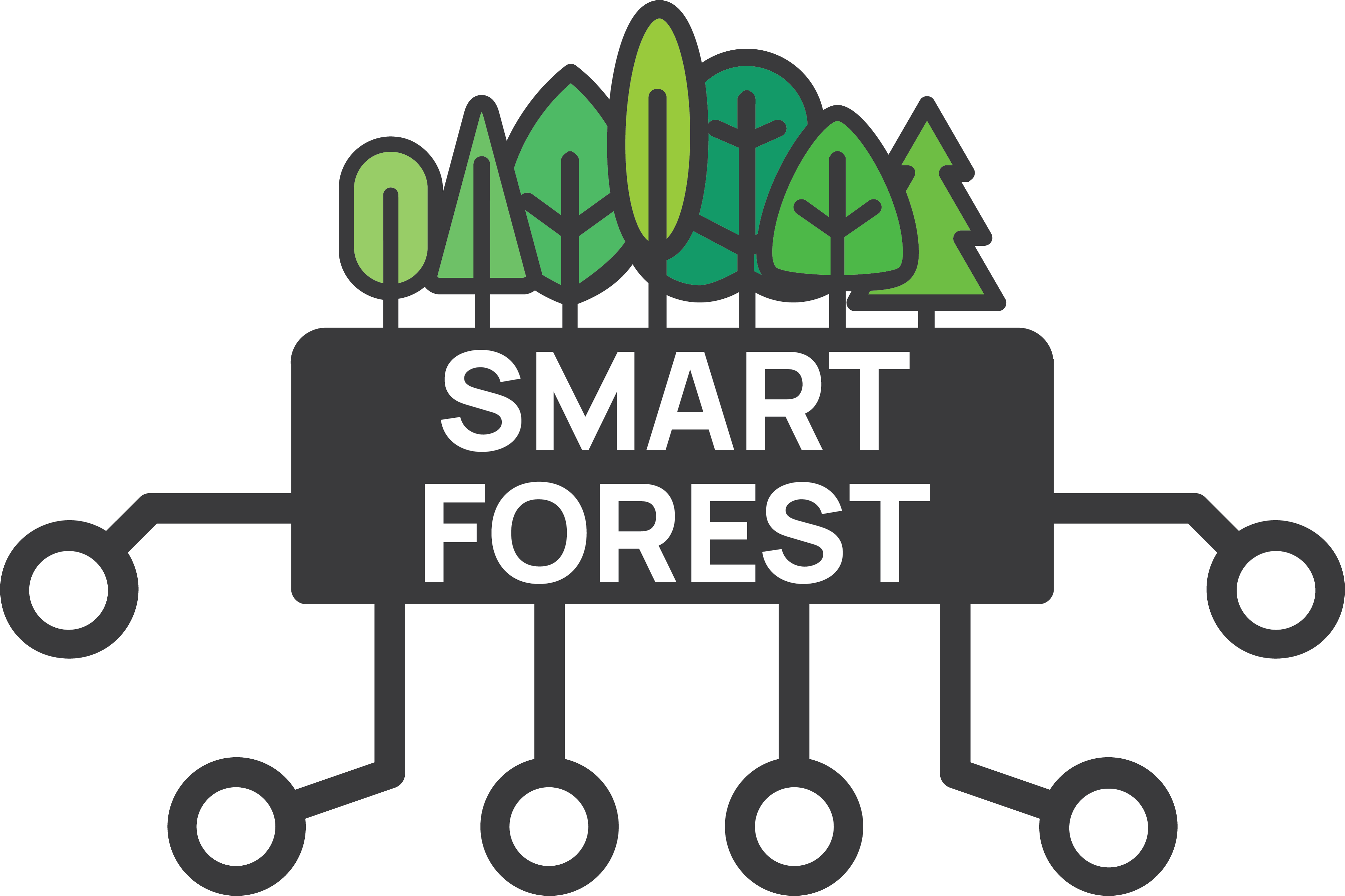SmartForest 2026 Focus Sessions
SmartForest 2026 will take place on the 12th and 13th of March, 2026, at the Technical University of Munich’s campus in Freising, at the Zentrum Wald-Forst-Holz Weihenstephan.
The conference boosts a diverse programme, featuring experts from both science and practice.
You can find a more extensive overview of this programme here.
This page provides information on exceptional sessions, which require actions from prospective participants and contributors ahead of the conference.
You can register for SmartForest 2026 here.

Block 3: Forestry Practice 4.0 – AI for Sustainable Forestry
These sessions relate to forward-looking digital approaches that demonstrate the potential of digital tools for sustainable forestry.
You can learn more about the conference’s thematic blocks on our programme page.

Forest dynamics are becoming increasingly uncertain as climate change and natural disturbances reshape tree vitality, growth, and mortality. These rapid changes challenge our ability to effectively monitor relevant forest conditions across spatial and temporal scales. There is a growing need not only for detailed reconstructions of current and past dynamics, but also for robust projections of future forest trajectories. Progress toward these goals depends on high-quality, spatially explicit datasets from remote sensing that both characterise forest dynamics and serve as benchmarks for model calibration and evaluation.
The expanding range of high-spatial and high-temporal resolution active and passive remotely sensed data enables to derive unprecedented and continuous information on forest structure, species composition, and disturbance patterns. These datasets constitute valuable outputs, forming essential benchmarks for model validation and calibration. Advances in geospatial data processing, particularly through artificial intelligence (AI), further enhance our ability to extract insights and translate complex dynamics into a mechanistic representation/understanding of the forest system. Yet, forest models that project forest dynamics and assess management scenarios often struggle to fully harness these data streams. At the same time, more comprehensive datasets enable improved projections, especially in processes and regions where our understanding remains limited.
This session invites contributions that present new benchmark datasets from remote sensing and AI-based forest monitoring, as well as studies linking these datasets to modelling and management practices.
We particularly welcome studies that focus on tree-species identification, assessing canopy structure, biomass estimation, tree-mortality detection, or disturbance monitoring using drones, LiDAR, hyperspectral, or satellite time series data to support forest monitoring tasks, forecasting, or decision-making. Technical developments in AI model architectures, data-processing workflows, or sensor-fusion pipelines are equally encouraged, especially where they demonstrate relevance for modelling or management applications. We welcome contributions that demonstrate how remote sensing can inform, enhance, or complement dynamic modelling approaches, even if they do not include modelling directly. By integrating remotely sensed data, AI, and modelling, this session focuses on improving forest monitoring, scenario analysis, and sustainable management, promoting routes towards resilient, data-driven future forestry applications.
How to Contribute
If you wish to contribute to the Block 3 Session “Bridging remote sensing and modelling: Benchmark data for future forests” please submit an abstract to Block 3: “Forestry Practice 4.0 – AI for Sustainable Forestry” via our ConfTool submission system.
You can learn more about contributing to SmartForest 2026 here.


